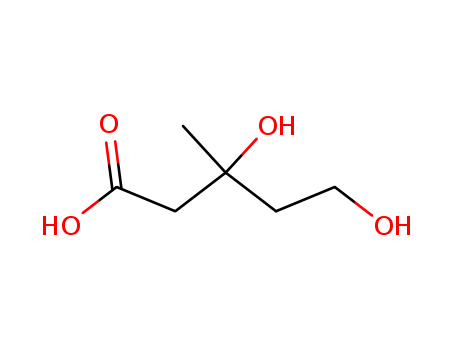10.1016/S0040-4020(01)88311-3
The study details an enantioselective synthesis of (R)-mevalonolactone (1) starting from (2S,3R)-epoxide 2, which was prepared with >95% enantiomeric excess (ee) by asymmetric epoxidation of nerol. The primary hydroxyl group of epoxide 2 was protected by formation of ethoxyethyl ether 5, and subsequent reduction yielded 6. Conversion of 6 to its benzyl ether 7 was followed by ozonolysis to afford intermediate 8. To remove an additional carbon from 8, it was converted to phenylselenide 9, and oxidative elimination formed an alkene, which was cleaved by further oxidation to yield alkenol 11. Oxidation of 11 with pyridinium dichromate in DMF gave 12, and reductive ozonolysis of 12 afforded benzyl ether 13. Finally, removal of the benzyl group by catalytic hydrogen transfer yielded (R)-mevalonolactone (1). The study aimed to develop a synthetic pathway that could lead to both prospective haptens and (R)-mevalonolactone from a common intermediate, with potential applications in the development of a radioimmunoassay for measuring mevalonic acid concentration in biological media.





